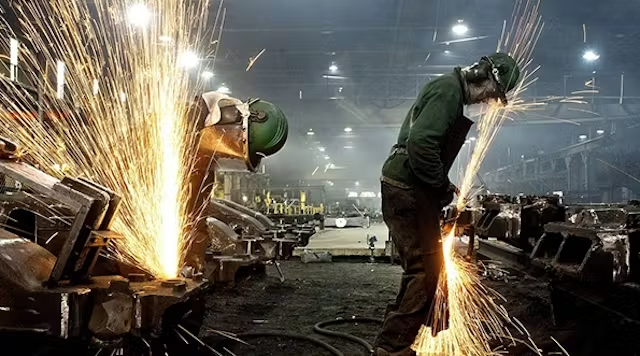Steel Casting Industry to Reach $42 Billion by 2029
The global steel casting market is set for impressive growth, with projections indicating a rise from USD 33.90 billion in 2025 to USD 42.18 billion by 2029. This growth trajectory, representing a compound annual growth rate (CAGR) of 5.6%, underscores the increasing demand for high-performance materials across key industrial sectors.
Steel casting involves pouring molten steel into moulds to produce parts that demand exceptional strength, durability, and resistance to heat, wear, and corrosion. This casting process has become a cornerstone for industries that require heavy-duty and highly reliable components, such as automotive, aerospace, construction, and energy. The market’s expansion is largely driven by its integral role in manufacturing critical components such as automotive parts, power plant equipment, and even aerospace structures. Segmented by type, the market consists of carbon steel, low-alloy steel, high-alloy steel, and others. Carbon steel casting remains a popular choice due to its toughness and machinability, particularly in construction and automotive applications. Low-alloy steel is preferred for its superior corrosion and heat resistance, making it suitable for sectors like energy and manufacturing. High-alloy steel, prized for its ability to withstand extreme environments, is a go-to solution for industries such as aerospace and power generation.
Casting methods also play a significant role in market dynamics. Sand casting, investment casting, die casting, and other methods cater to varying industrial requirements based on production volume, part complexity, and precision needs. Sand casting is especially prevalent for large and intricate steel components, while investment casting excels in producing high-precision parts. Another key market trend is the growing demand for eco-friendly formulations in steel casting. Solvent-based formulations continue to dominate the market, offering consistency and durability. However, solventless and emulsion-based formulations, which are increasingly sought for their environmental benefits, are gaining traction.
The market is not only growing globally but is particularly strong in the Asia Pacific region, driven by rapid industrialisation and infrastructure development. India, in particular, stands to benefit significantly from this trend. As infrastructure projects surge, the demand for steel castings will likely increase, bolstering the nation’s manufacturing capabilities. The steel casting market is expected to expand steadily, with growing demand across diverse industrial sectors. The market’s growth reflects the increasing reliance on steel for manufacturing critical, high-performance components that are essential to numerous industries.







